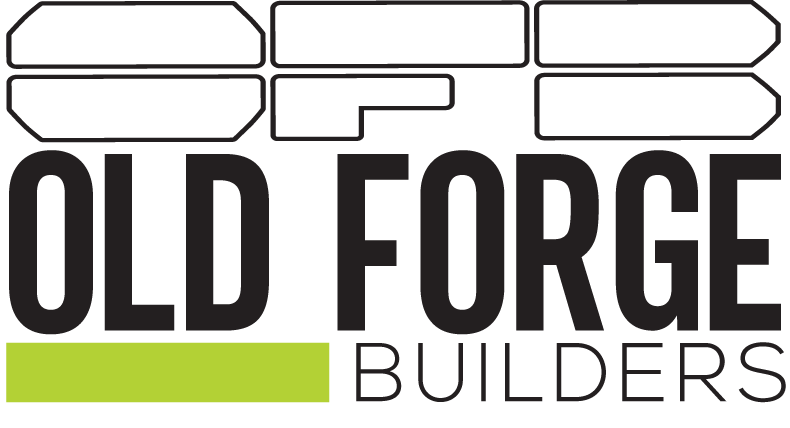Tuesday I attended the Healthcare Facility Managers Association of Delaware Valley’s Fall Conference to better understand the medical spaces Old Forge has grown to support and the regulatory requirements they must continue to meet for patient safety. The day was so informative – loaded with compliance tips from ASHE (The American Society for Healthcare Engineering) and The Joint Commission, a global driver of quality improvement standards, helping organizations across the continuum of care lead the way to zero harm.
Joint Commission Compliance
The first speaker from the Joint Commission offered a wealth of information on ensuring compliance in the physical environment – from top physical environment observations and their solutions, to how facilities can gain accreditations to receive reimbursements (i.e. CMS, Centers for Medicare & Medicaid Services, requires that hospitals either be accredited or pass state inspection to receive Medicare reimbursement.) When it comes to surveys of environments of care, documentation is such a key factor.
An example of this – documentation of maintenance, testing, and inspection activities for Standard EC.02.03.05, Eps 1-20, 25 (including fire alarm and fire protection systems) includes the following as an overview of the elements and examples of each:
- Name of activity: Fire Protection and Suppression Testing and Inspection
- Date of the activity
- Indicate accordingly
- Inventory of devices, equipment, or other items
- Supervisory Signals – including: control valves; pressure supervisory; pressure tank, pressure supervisory for a dry pipe (both high and low conditions), steam pressure; water level supervisory signal initiating device; water temperature supervisory; and room temperature supervisory.
- Required frequency of the activity
- Quarterly
- Name and contact information, including affiliation, of the person who performed the activity
- Indicate accordingly
- NFPA standard(s) referenced for the activity:
- NFPA 72-2010; Table 14.4.5.
- Results of the activity
- Indicate accordingly
Sustainability Planning
The next speaker from ASHE described programs to track, manage, and communicate energy savings across multiple facilities. The dashboard offered under the Energy to Care program provides utility bill fault detection and energy savings potential. With healthcare’s “around the clock” schedule, the carbon footprint is an important matter to minimize – in fact, if US medical facilities were a country, they would be the 6th largest country in the world in terms of consumption. “Treasure hunts” are an activity entire teams can participate in (nurses, doctors, administrators) to review their workspaces and identify ways to save on energy and present to administration. Although specific standards for sustainability haven’t yet been clarified for hospitals and large-scale health systems, a “Reduction Act” has been passed – many speculate that this will lead to some defined guidelines. The goal is to get ahead of these regulations with reduced utilization wherever possible.
Life Safety and Infection Control During Construction Activity
The discussion of the next speaker left me (among others I’m sure) to reflect on projects being executed during the height of COVID’s introduction. Sure – a contractor can manage the success of their project without flaw; however, adding the element of an occupied space and patient health factored into the equation is a whole separate challenge. The presentation highlighted that healthcare associated infections account for 1.7 million infections and 99,000 deaths each year. Approximately 5,000 of these deaths are linked to construction and renovation activities.
Many of this risk can be reduced with a PCRA, Pre-Construction Risk Assessment – a process to determine the risks that compromise care. This includes risks to life safety, infection prevention and control, and the healthcare environment resulting from construction projects (including maintenance, repairs, renovation, modernization, demolition, and reconstruction). This should be a collaborative effort with the facility/plant operations team, project professionals (contractors, architects, engineers, consultants), security, IT, and clinical teams affected.
Some of the risks to be assessed include:
- Life Safety
- Means of Egress
- Fire Protection Systems
- Construction Partitions
- Infection Control and Prevention
- Air Quality
- Utility Impacts
- Noise
- Vibration
- Asbestos/Lead-Based Paint
The assessment should also consider:
- Project location
- Impacts of building configuration
- Containment measures
- Interim Life Safety Measures (ILSM)
Similar to the other inspections and surveys, documentation is key in an effective PCRA. Also, communicating site observations and lessons learned from previous projects are great reflections on how any potential HAI (hospital associated infection) or potential risk can be mitigated.
I have to give kudos to the facilities managers in the room during the educational sessions – their jobs are far from easy. There really was a strong degree of interest and concern for the topics discussed from the group, and the overall experience was pretty intriguing. My key take away is how my team can make facility managers’ lives easier by understanding these codes best and working to realize the strongest success of their facility operations by being a vocal, educated partner.

